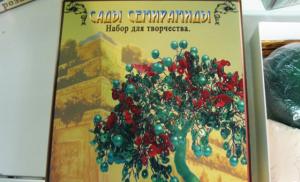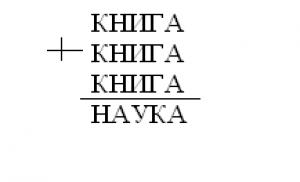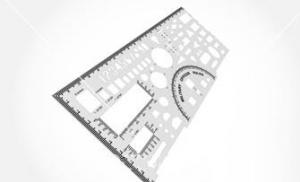Da Vinci man. Leonardo Da Vinci
15 little known facts about the "Vitruvian Man" by Leonardo da Vinci
The Vitruvian Man is a drawing made by Leonardo Da Vinci around 1490-1492 as an illustration for a book dedicated to the works of Vitruvius. The drawing is accompanied by explanatory inscriptions in one of his journals. It depicts the figure of a naked man in two superimposed positions: with arms outstretched to the sides, describing a circle and a square. Drawing and text are sometimes referred to as canonical proportions.
1. Leonardo never intended to flaunt his "Vitruvian Man"

The sketch was discovered in one of the Renaissance master's personal notebooks. In fact, Leonardo drew a sketch for his own research and did not even suspect that he would someday be admired. However, today "Vitruvian Man" is one of the most famous works artist, along with The Last Supper and Mona Lisa.
2. Combination of art and science

Being a true representative of the Renaissance, Leonardo was not only a painter, sculptor and writer, but also an inventor, architect, engineer, mathematician and an expert in anatomy. This ink drawing was the result of Leonardo's study of theories about human proportions described by the ancient Roman architect Vitruvius.
3. Leonardo wasn't the first to try to illustrate Vitruvius' theories

As modern scholars believe, there were many people in the 15th century and subsequent decades who tried to capture this idea in visual form.
4. Perhaps the drawing was made not only by Leonardo himself

In 2012, the Italian architectural historian Claudio Sgarbi published findings that Leonardo's study of human body proportions was prompted by a similar study done by his friend and fellow architect Giacomo Andrea de Ferrara. It is still unclear if they worked together. Even if this theory is incorrect, historians agree that Leonardo perfected the shortcomings of Giacomo's work.
5. The circle and the square have their own hidden meaning.

In their mathematical studies, Vitruvius and Leonardo described not only the proportions of man, but also the proportions of the entire creation. AT notebook In 1492 Leonardo's entry was found: " ancient man was the world in miniature. Since man is made up of earth, water, air and fire, his body resembles a microcosm of the universe."
6. "Vitruvian Man" is just one of many sketches

In order to improve his art and better understand how the world around him works, Leonardo painted many people in order to form an idea of ideal proportions.
7. Vitruvian man - the ideal of a man

Who served as a model will remain a mystery, but art historians believe that Leonardo took some liberties in his drawing. This work was not so much a portrait as a conscientious depiction of ideal male forms from the point of view of mathematics.
8. It could be a self-portrait

Since no descriptions of the model from which this sketch was drawn have been preserved, some art historians believe that Leonardo painted the Vitruvian Man from himself.
9 Vitruvian Man Had A Hernia

Khutan Ashrafyan, a surgeon at Imperial College London, 521 years after the creation of the famous drawing, established that the person depicted in the sketch had an inguinal hernia, which could lead to his death.
10. To understand the full meaning of the picture, you need to read the notes to it.

When the sketch was originally discovered in Lernardo's notebook, next to it were the artist's notes on human proportions, which read: "The architect Vitruvius states in his work on architecture that the measurements of the human body are distributed according to the following principle: the width of 4 fingers is equal to 1 is 4 palms, the elbow is 6 palms, full height a person - 4 cubits or 24 palms ... Vitruvius used the same measurements in the construction of his buildings.
11. The body is lined with measured lines

If you look closely at the chest, arms and face of the person in the drawing, you can see straight lines that mark the proportions that Leonardo wrote about in his notes. For example, the part of the face from the bottom of the nose to the eyebrows is a third of the face, as is the part of the face from the bottom of the nose to the chin and from the eyebrows to the line where the hair begins to grow.
12. The sketch has other, less esoteric names.

The sketch is also called "The Canon of Proportions" or "The Proportions of a Man".
13. The Vitruvian Man does 16 poses at the same time.

At first glance, only two poses can be seen: standing man, who moved his legs and spread his arms, and a standing man with legs apart and arms raised. But part of the genius of Leonardo's depiction is that 16 poses are depicted simultaneously in one drawing.
14. Leonardo da Vinci's creation was used to represent the problems of our time.

Irish artist John Quigley used an iconic image to illustrate the problem global warming. To do this, he depicted a multiply enlarged copy of the Vitruvian Man on the ice in the Arctic Ocean.
15. The original sketch is rarely seen in public.

Copies can be found literally everywhere, but the original is too fragile to be displayed in public. The Vitruvian Man is usually kept under lock and key in the Accademia Gallery in Venice.
The Vitruvian Man is a drawing made by Leonardo Da Vinci around 1490-1492 as an illustration for a book dedicated to the writings of Vitruvius. The drawing is accompanied by explanatory inscriptions in one of his journals. It depicts the figure of a naked man in two superimposed positions: with arms outstretched to the sides, describing a circle and a square. Drawing and text are sometimes referred to as canonical proportions.
1. Leonardo never intended to flaunt his "Vitruvian Man"
The sketch was discovered in one of the Renaissance master's personal notebooks. In fact, Leonardo drew a sketch for his own research and did not even suspect that he would someday be admired. However, today "Vitruvian Man" is one of the most famous works of the artist, along with "The Last Supper" and "Mona Lisa".
2. Combination of art and science

Being a true representative of the Renaissance, Leonardo was not only a painter, sculptor and writer, but also an inventor, architect, engineer, mathematician and an expert in anatomy. This ink drawing was the result of Leonardo's study of the theories of human proportions described by the ancient Roman architect Vitruvius.
3. Leonardo wasn't the first to try to illustrate Vitruvius' theories

As modern scholars believe, there were many people in the 15th century and subsequent decades who tried to capture this idea in visual form.
4. Perhaps the drawing was made not only by Leonardo himself

In 2012, the Italian architectural historian Claudio Sgarbi published findings that Leonardo's study of human body proportions was prompted by a similar study done by his friend and fellow architect Giacomo Andrea de Ferrara. It is still unclear if they worked together. Even if this theory is incorrect, historians agree that Leonardo perfected the shortcomings of Giacomo's work.
5. The circle and the square have their own hidden meaning.

In their mathematical studies, Vitruvius and Leonardo described not only the proportions of man, but also the proportions of the entire creation. In a notebook of 1492, Leonardo's entry was found: "Ancient man was a world in miniature. Since man consists of earth, water, air and fire, his body resembles a microcosm of the Universe."
6. "Vitruvian Man" is just one of many sketches

In order to improve his art and better understand how the world around him works, Leonardo painted many people in order to form an idea of ideal proportions.
7. Vitruvian man - the ideal of a man

Who served as a model will remain a mystery, but art historians believe that Leonardo took some liberties in his drawing. This work was not so much a portrait as a conscientious depiction of ideal male forms from the point of view of mathematics.
8. It could be a self-portrait

Since there is no description of the model from which this sketch was drawn, some art historians believe that Leonardo painted the "Vitruvian Man" from himself.
9 Vitruvian Man Had A Hernia

Khutan Ashrafyan, a surgeon at Imperial College London, 521 years after the creation of the famous drawing, established that the person depicted in the sketch had an inguinal hernia, which could lead to his death.
10. To understand the full meaning of the picture, you need to read the notes to it.

When the sketch was originally discovered in Lernardo's notebook, next to it were the artist's notes on human proportions, which read: "The architect Vitruvius states in his work on architecture that the measurements of the human body are distributed according to the following principle: the width of 4 fingers is equal to 1 palm, the foot is 4 palms, a cubit is 6 palms, the full height of a person is 4 cubits or 24 palms ... Vitruvius used the same measurements in the construction of his buildings.
11. The body is lined with measured lines

If you look closely at the chest, arms and face of the person in the drawing, you can see straight lines that mark the proportions that Leonardo wrote about in his notes. For example, the part of the face from the bottom of the nose to the eyebrows is a third of the face, as is the part of the face from the bottom of the nose to the chin and from the eyebrows to the line where the hair begins to grow.
12. The sketch has other, less esoteric names.

The sketch is also called "The Canon of Proportions" or "The Proportions of a Man".
13. The Vitruvian Man does 16 poses at the same time.

At first glance, only two poses can be seen: a standing person who has moved his legs and spread his arms, and a standing person with legs apart and arms raised. But part of the genius of Leonardo's depiction is that 16 poses are depicted simultaneously in one drawing.
14. Leonardo da Vinci's creation was used to represent the problems of our time.

Irish artist John Quigley used an iconic image to illustrate the problem of global warming. To do this, he depicted a multiply enlarged copy of the Vitruvian Man on the ice in the Arctic Ocean.
15. The original sketch is rarely seen in public.

Copies can be found literally everywhere, but the original is too fragile to be displayed in public. The Vitruvian Man is usually kept under lock and key in the Accademia Gallery in Venice.
Vitruvian Man - that's what it's called graphic image naked man in the famous sketch by Leonardo da Vinci. It has been studied for centuries. However, scientists are sure that not all the secrets of the drawing have been revealed yet.
Leonardo da Vinci: Vitruvian Man (Academic Gallery, Venice, Italy)
Being one of the most mysterious and controversial figures of his era, Leonardo da Vinci left behind many secrets. Their meaning still disturbs the scientific minds of the whole world. One of these mysteries is the Vitruvian Man, a pencil sketch of which has been carefully preserved for centuries. And although a lot is known about him, but experts in the field of art are sure that great discoveries are yet to come.
Vitruvian Man is official name sketch by Leonardo. It was made by him in 1492 and was intended to illustrate a handwritten book. The drawing represents a naked man whose body is inscribed in a circle and a square. In addition, the image has a duality - the human body is depicted in two poses superimposed on each other.
As you can see when examining the drawing, the combination of arm and leg positions actually results in two different positions. A pose with arms spread apart and legs brought together turns out to be inscribed in a square. On the other hand, the pose with arms and legs spread out to the sides is inscribed in a circle. On closer examination, it turns out that the center of the circle is the navel of the figure, and the center of the square is the genitals.
Da Vinci's diary, for which the drawing was intended, is called the Canon of Proportions. The fact is that the artist believed in a certain number "phi", calling it divine. He was sure of the presence of this number in everything created in wildlife. However, da Vinci tried to achieve the “divine proportion” he had deduced in architecture. But this remained one of the unrealized ideas of Leonardo. But the Vitruvian Man is fully depicted in accordance with "phi", that is, in the figure - a model of an ideal creature.
According to Leonardo's accompanying notes, it was created to determine the proportions of the (male) human body, as described in the treatises of the ancient Roman architect Vitruvius; to which Leonardo wrote the following explanations:
- the length from the tip of the longest to the lowest base of the four fingers is equal to the palm
- foot is four palms
- a cubit is six palms
- the height of a person is four cubits from the tips of the fingers (and, accordingly, 24 palms)
- step equals four palms
- scope human hands equal to his height
- the distance from the hairline to the chin is 1/10 of its height
- the distance from the crown to the chin is 1/8 of its height
- the distance from the crown to the nipples is 1/4 of its height
- the maximum width of the shoulders is 1/4 of its height
- the distance from the elbow to the tip of the arm is 1/4 of its height
- the distance from the elbow to the armpit is 1/8 of its height
- arm length is 2/5 of its height
- the distance from the chin to the nose is 1/3 of the length of his face
- the distance from the hairline to the eyebrows is 1/3 of the length of his face
- ear length 1/3 face length
- the navel is the center of the circle
The rediscovery of the mathematical proportions of the human body in the 15th century by da Vinci and others was one of the great achievements that preceded Italian Renaissance.
Subsequently, according to the same methodology, Corbusier compiled his own proportioning scale - Modulor, which influenced the aesthetics of architecture of the 20th century.
The drawing appeared as a result of studying Italian master works of Vitruvius - an outstanding architect ancient rome. In his treatises, the human body was identified with architecture. However, denying this idea, da Vinci developed the idea of the union of three elements in man - art, science and divine principles, that is, a reflection of the Universe.
In addition to a deep philosophical message, the Vitruvian man also has a certain symbolic meaning. The square is interpreted as material sphere, circle - spiritual. The contact of the figures with the body of the depicted person is a kind of intersection in the center of the universe.
On the this moment the sketch is kept in the Venice Museum. There is no free access to the relic - the exhibit is exhibited extremely rarely. Those who wish have the opportunity to look at it once every six months, since moving and being in direct light are detrimental to the manuscript, which is almost 500 years old. Most of the da Vinci structures made according to sketches have survived to this day. Those who wish can see the old projects and their current incarnation in Milan, in the Museum of Science of Leonardo da Vinci, located near the Sant'Ambrogio metro station.
Interesting Facts:
- The drawing itself is often used as an implicit symbol of the internal symmetry of the human body and, further, of the Universe as a whole.
- In 2011, Irish aerial artist John Quigley painted a giant copy of the famous Vitruvian Man painting on the ice of the Arctic Ocean in order to draw the attention of mankind to the problems of ecological balance.
- In 2012, reports were published that the first visual image of the “Vitruvian Man” was drawn not by Leonardo, but by his friend Giacomo Andrea da Ferrara, who studied the works of Vitruvius in detail, although his drawing is disproportionately inferior to Leonardo’s drawing in terms of artistic merit.
The Vitruvian Man is a drawing made by Leonardo Da Vinci around 1490-1492 as an illustration for a book dedicated to the works of Vitruvius. The drawing is accompanied by explanatory inscriptions in one of his journals. It depicts the figure of a naked man in two superimposed positions: with arms outstretched to the sides, describing a circle and a square.
Drawing and text are sometimes referred to as canonical proportions. When examining the drawing, it can be seen that the combination of arms and legs actually amounts to four different postures. A pose with arms spread apart and legs not spread apart fits into a square (“Square of the Ancients”). On the other hand, a pose with arms and legs spread out to the sides fits into a circle. And, although, when changing positions, it seems that the center of the figure is moving, in fact, the navel of the figure, which is its real center, remains motionless.
"Vetruvio architetto mette nelle sue opera d" architettura che le misure dell "omo…""The architect Vetruvius laid the dimensions of man in his architecture..." More goes description relationships between various parts human body.
In the accompanying notes, Leonardo da Vinci indicated that the drawing was created to study the proportions of the (male) human body, as described in the treatises of the ancient Roman architect Vitruvius, who wrote the following about the human body:
“Nature disposed of the following proportions in the structure of the human body:
the length of four fingers is equal to the length of the palm,
four palms are equal to a foot,
six hands make one cubit,
four cubits is the height of a man.
Four cubits are equal to a step, and twenty-four palms are equal to the height of a man.
If you spread your legs so that the distance between them is 1/14 of a human height, and raise your hands so that the middle fingers are at the level of the top of the head, then the center point of the body, equidistant from all limbs, will be your navel.
The space between the legs apart and the floor forms an equilateral triangle.
The length of the outstretched arms will be equal to the height.
The distance from the roots of the hair to the tip of the chin is equal to one tenth of human height.
The distance from the top of the chest to the top of the head is 1/6 of the height.
The distance from the upper chest to the roots of the hair is 1/7.
The distance from the nipples to the crown is exactly a quarter of the height.
The greatest shoulder width is an eighth of the height.
The distance from the elbow to the fingertips is 1/5 of the height, from the elbow to the armpit - 1/8.
The length of the entire arm is 1/10 of the height.
The beginning of the genitals is located just in the middle of the body.
The foot is 1/7 of the height.
The distance from the toe of the foot to the patella is equal to a quarter of the height, and the distance from the patella to the beginning of the genitals is also equal to a quarter of the height.
The distance from the tip of the chin to the nose and from the roots of the hair to the eyebrows will be the same and, like the length of the ear, equal to 1/3 of the face.
The rediscovery of the mathematical proportions of the human body in the 15th century by Leonardo da Vinci and others was one of the great achievements that preceded the Italian Renaissance. The drawing itself is often used as an implicit symbol of the internal symmetry of the human body.
Art is inherent in the desire for harmony, proportion, harmony. We find them in the proportions of architecture and sculpture, in the arrangement of objects and figures, in the combination of colors in painting, in the alternation of rhymes and rhythm in poetry, in the sequence musical sounds. These properties are not invented by people. They reflect the properties of nature itself. One of the proportions is most often found in art. She got the title golden ratio". The golden ratio was known in antiquity. So in book II of Euclid's "Beginnings" it is used in the construction of pentagons and decagons.
The term "golden ratio" was introduced by Leonardo da Vinci. If we tie a human figure - the most perfect creation of the universe - with a belt and then measure the distance from the belt to the feet, then this value will refer to the distance from the same belt to the top of the head, as the entire height of a person relates to the length from the belt to the feet ...
Indeed, in nature and the human body there are many proportional relationships close to what Leonardo da Vinci called the golden ratio. Although not embodying it exactly. By the way, the golden ratio, which is preferred in many cases, is not the only ratio that is visually perceived as beautiful. These include relationships such as 1:2, 1:3. They are close to the golden ratio. In any work of art, several unequal, but close to the golden section, parts give the impression of the development of forms, their dynamics, proportional complement to each other. In particular, the ratio based on the golden ratio is most common in the construction of monuments.
Is it possible to talk about the golden ratio in music? It is possible if you measure musical composition by the time of its execution. In music, the golden ratio reflects the peculiarities of human perception of time proportions. The point of the golden section serves as a guide for shaping (especially in short essays), often it has a climax. It may also be the most bright moment or the quietest, densest place in terms of texture or the highest pitch. But it also happens that a new musical theme appears at the point of the golden section.
Leonardo da Vinci. Self-portrait. 1514 - 1516
The Vitruvian Man is a drawing made by Leonardo Da Vinci around 1490-92 as an illustration for a book dedicated to the writings of Vitruvius. The drawing is accompanied by explanatory inscriptions in one of his journals.. It depicts the figure of a naked man in two superimposed positions: with arms spread apart, describing a circle and a square.
Drawing and text are sometimes referred to as canonical proportions. When examining the drawing, it can be seen that the combination of arms and legs actually amounts to four different postures. A pose with arms spread apart and legs not spread apart fits into a square ("Square of the Ancients"). On the other hand, a pose with arms and legs spread out to the sides fits into a circle. And, although, when changing positions, it seems that the center of the figure is moving, in fact, the navel of the figure, which is its real center, remains motionless.
"Vetruvio architetto mette nelle sue opera d" architettura che le misure dell "omo…"."The architect Vetruvius laid the dimensions of man in his architecture ...". The following is a description of the relationships between the various parts of the human body.
In the accompanying notes, Leonardo da Vinci indicated that the drawing was created to study the proportions of the (male) human body, as described in the treatises of the ancient Roman architect Vitruvius, who wrote the following about the human body:
"Nature disposed of the following proportions in the structure of the human body:
the length of four fingers is equal to the length of the palm,
four palms are equal to a foot,
six hands make one cubit,
four cubits is the height of a man.
Four cubits are equal to a step, and twenty-four palms are equal to the height of a man.
If you spread your legs so that the distance between them is 1/14 of a human height, and raise your hands so that the middle fingers are at the level of the top of the head, then the center point of the body, equidistant from all limbs, will be your navel.
The space between the legs apart and the floor forms an equilateral triangle.
The length of the outstretched arms will be equal to the height.
The distance from the roots of the hair to the tip of the chin is equal to one tenth of human height.
The distance from the top of the chest to the top of the head is 1/6 of the height.
The distance from the upper chest to the roots of the hair is 1/7.
The distance from the nipples to the crown is exactly a quarter of the height.
The greatest shoulder width is an eighth of the height.
The distance from the elbow to the fingertips is 1/5 of the height, from the elbow to the armpit - 1/8.
The length of the entire arm is 1/10 of the height.
The beginning of the genitals is located just in the middle of the body.
The foot is 1/7 of the height.
The distance from the toe of the foot to the patella is equal to a quarter of the height, and the distance from the patella to the beginning of the genitals is also equal to a quarter of the height.
The distance from the tip of the chin to the nose and from the roots of the hair to the eyebrows will be the same and, like the length of the ear, equal to 1/3 of the face.

The rediscovery of the mathematical proportions of the human body in the 15th century by Leonardo da Vinci and others was one of the great achievements that preceded the Italian Renaissance. The drawing itself is often used as an implicit symbol of the internal symmetry of the human body.
Art is inherent in the desire for harmony, proportion, harmony. We find them in the proportions of architecture and sculpture, in the arrangement of objects and figures, in the combination of colors in painting, in the alternation of rhymes and rhythm in poetry, in the succession of musical sounds. These properties are not invented by people. They reflect the properties of nature itself. One of the proportions is most often found in art. It is called the "golden section". The golden ratio has been known since ancient times. So in book II of the "Beginnings" of Euclid, it is used in the construction of pentagons and decagons.
The term "golden ratio" was introduced by Leonardo da Vinci. If we tie a human figure - the most perfect creation of the universe - with a belt and then measure the distance from the belt to the feet, then this value will refer to the distance from the same belt to the top of the head, as the entire height of a person relates to the length from the belt to the feet ...
Indeed, in nature and the human body there are many proportional relationships close to what Leonardo da Vinci called the golden ratio. Although not embodying it exactly. By the way, the golden ratio, which is preferred in many cases, is not the only ratio that is visually perceived as beautiful. These include relationships such as 1:2, 1:3. They are close to the golden ratio. In any work of art, several unequal, but close to the golden section, parts give the impression of the development of forms, their dynamics, proportional complement to each other. In particular, the ratio based on the golden section is most common in the construction of monuments.
Is it possible to talk about the golden ratio in music? You can, if you "measure" a piece of music by the time of its performance. In music, the golden ratio reflects the peculiarities of human perception of time proportions. The point of the golden section serves as a guideline for shaping (especially in small works), often it has a climax. It can also be the brightest moment or the quietest, densest place in terms of texture or the highest pitch. But it also happens that a new musical theme appears at the point of the golden section.













